Stuart Forster visits Portugal’s Monument to the Discoveries in the Belem district of Lisbon.
The Monument to the Discoveries is today as just as much a part of the Belem landscape as the nearby Hieronymites Monastery – the ‘Mosteiro dos Jerónimos’ as it is known in Portuguese – the ornate Manueline structure which is today classified as a UNESCO World Heritage Site.
On busy days, the crowd of sightseers snakes several metres beyond the entrance of the pale limestone monastery, whose construction started in 1501 using funds raised by a tax on goods imported from Africa and the Orient, known as the Vintena da Pimenta which translates as “twentieth of the pepper”.
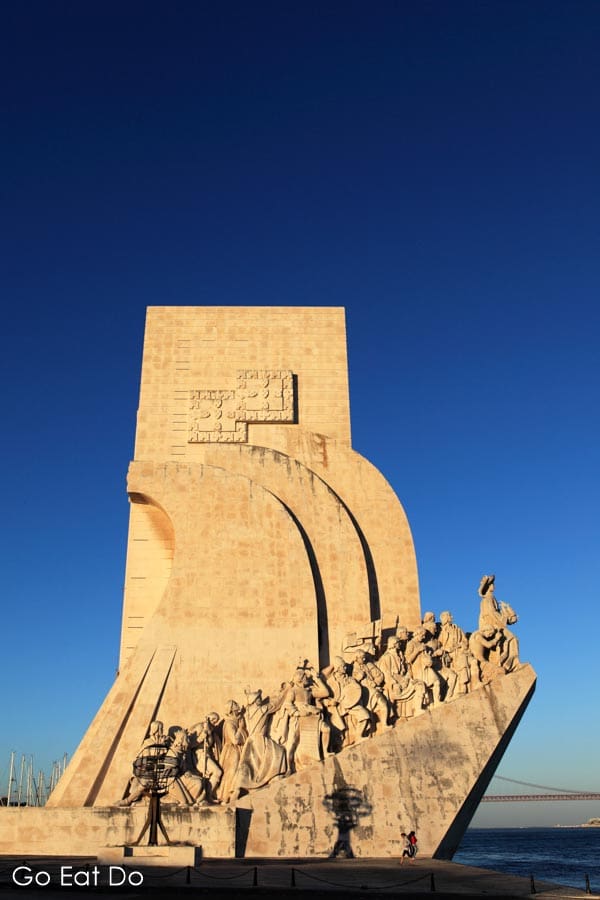
Lisbon’s Praça do Império
If the tourists waiting to enter the Hieronymites Monastery were to look across Empire Square (Praça do Império) and beyond the broad and busy adjacent Avenida da Índia and Avenida de Brasilia roads, they would see the Monument to the Discoveries, built to glorify the achievements of the people whose names are most closely associated with Portuguese exploration and expansion in the fifteenth and sixteenth centuries; effectively the men (and one woman) whose knowledge, leadership and contributions to the course of Portuguese history enabled the Vintena da Pimenta to be levied.
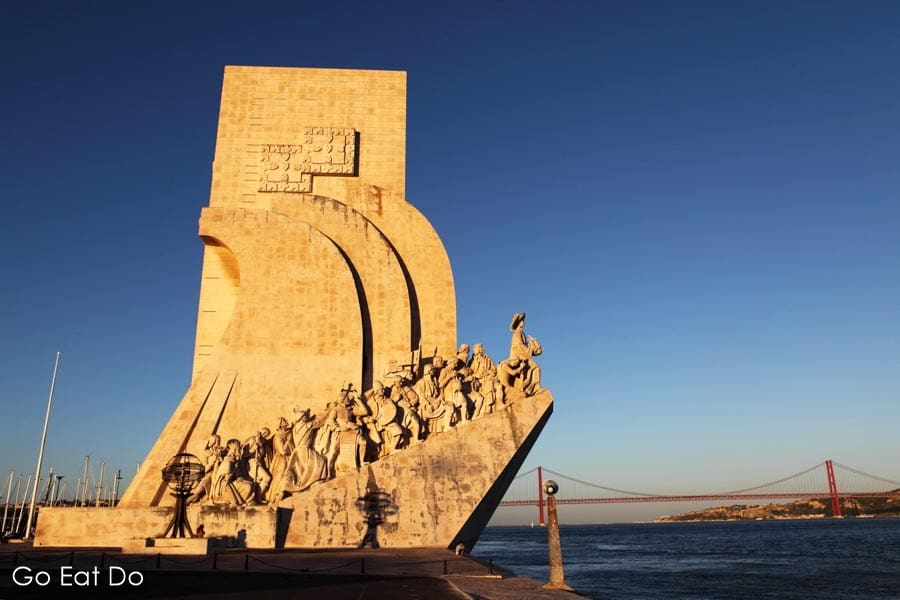
Monument to the Discoveries
The glorious achievements of Vasco da Gama, Pedro Alvares Cabral and Bartolomeu Dias, three of the navigators immortalised in sculptures on the sides of the towering Monument to the Discoveries belong to an era long gone. “They’d never be given the funding for such journeys today,” scoffs one flat-capped man, shaking his head.
Tourists and travellers remain largely unaffected by the cuts and changes which impact their Portuguese hosts. Lisbon continues to offer good value for money as a destination for a city break.
Despite the clouds which scud gloomily over the economic landscape the July sun continues to shine over the Tagus and the Belem district is a pleasant place to explore at leisure.
I climb the steps at the base of the Monument to the Discoveries and decide to take a look at Lisbon from the top.
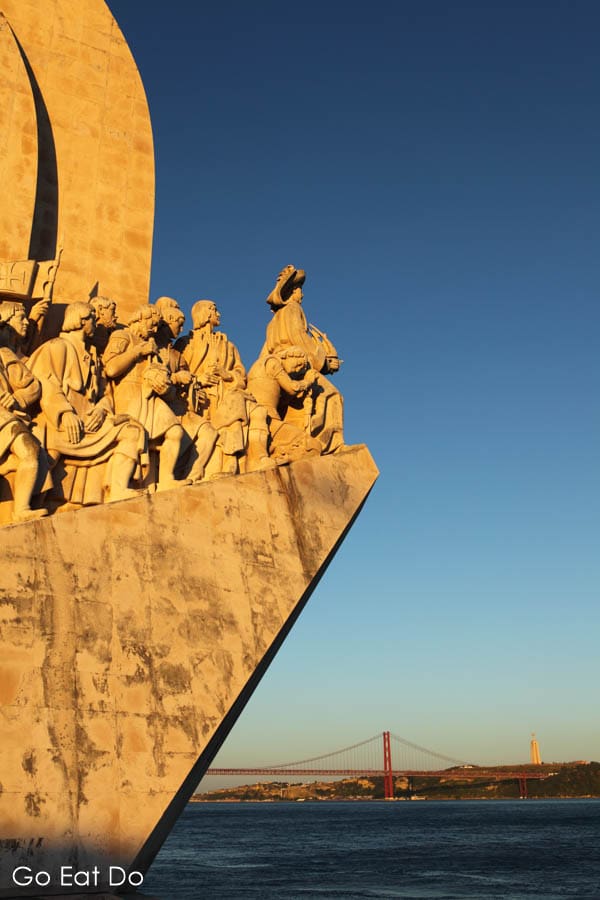
Great views of Belem
A lift whisks me up six stories, almost to the top, though there are still a few steps to go before I can look from the top of the monument towards the shimmering Tagus estuary, over to the nearby Cultural Centre of Belem and enjoy a new perspective on the facade of the Hieronymites Monastery.
I peer over the side and look down at the head of Prince Henrique, who is today widely known as Prince Henry the Navigator.
Henrique lived from 1394 to 1460. His interest in science and navigation plus his patronage in Sagres is seen as a factor which promoted Portuguese discoveries and expansion. Leopoldo de Almeida was the sculptor behind the figures around the monument, which is known as the Padrão dos Descobrimentos in Portuguese.
I note that a seagull is particularly appreciative of his work, using the prince’s hat as a perch to view the world.
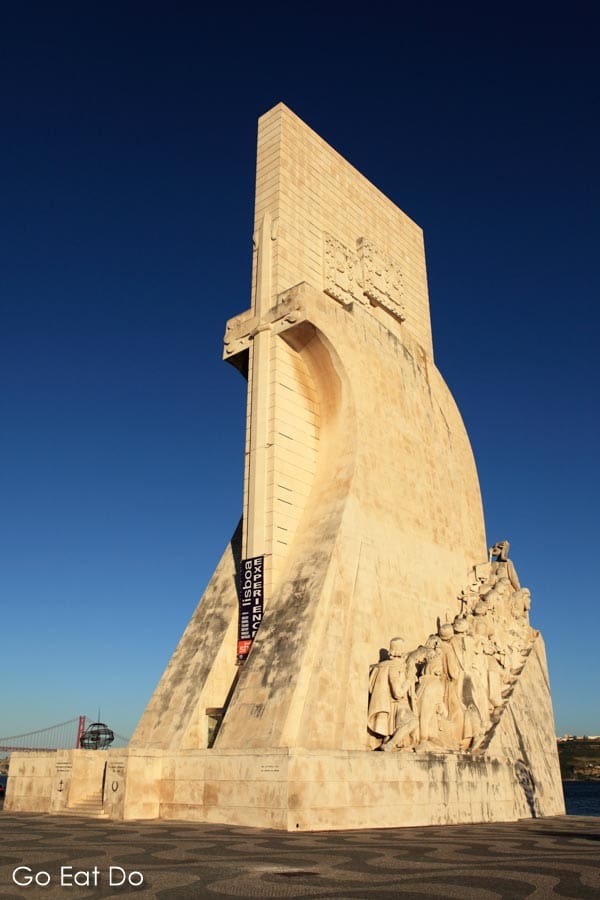
The Portuguese World Exhibition
This version of the monument was opened in 1960, marking 500 years since the death of Henry the Navigator. That’s why Portugal has a Monument to the Discoveries. Many visitors are unaware that an earlier version was designed by Cottinello Telmo and built for the Portuguese World Exhibition of 1940.
Some critics dismiss it as a glorification of imperialism and typical of the monumentalism of the right-leaning Estado Novo (New State) regime led by Antonio de Oliveira Salazar, the economist who became Portugal’s Prime Minister in the wake of economic instability in the early 1930s.
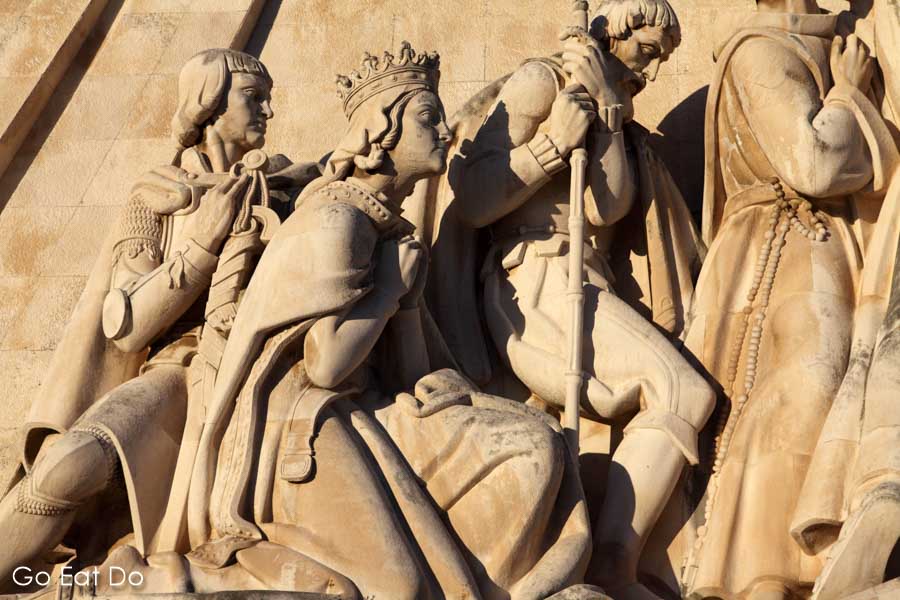
However you might view it from below, there’s no disputing that the monument’s viewing platform is the best place to view the marble wind rose, built into the promenade below. The wind rose has a diameter of 50 metres and includes a 14-metre wide map of the world, charting the Portuguese voyages of discovery.
South Africans might be interested to note that it was donated as a gift from their country’s government.
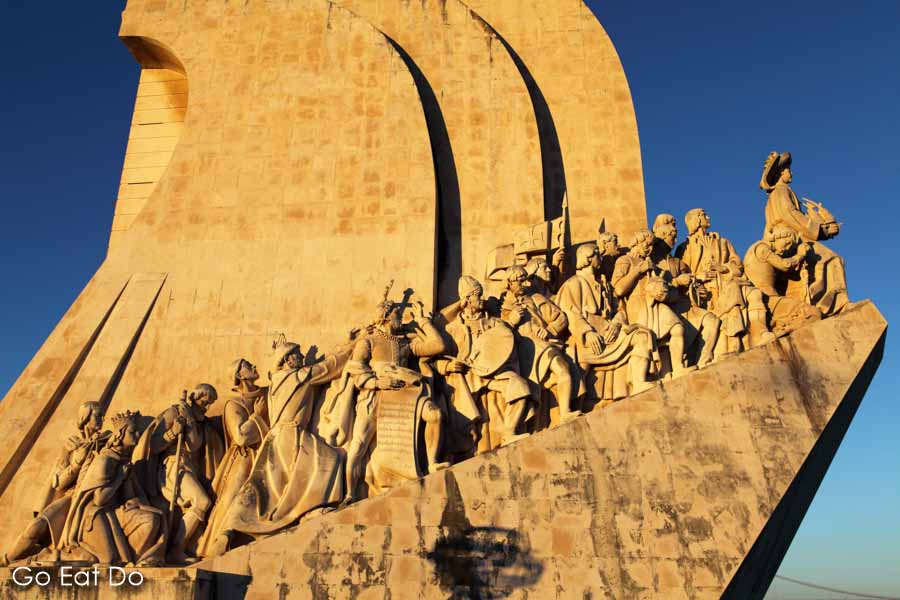
Like George Steinmetz’s camel photograph
Looking down at the long well-formed shadows of people crossing the wind rose reminded me of that famous George Steinmetz photograph of camels plodding across the sand that appeared in National Geographic a few years ago; it wasn’t so much the creatures themselves that were interesting but the shadows that they cast.
Perhaps, you might say, that’s true of all of the characters throughout the course of human history. How might Luiz Vaz de Camoes, Afonso de Albuquerque and Fernao de Magalhaes (better known in the English-speaking world as Ferdinand Magellan) have responded to such a claim?
That’s something I ponder as I sit by the Monument of the Discoveries and look up at their unblinking forms. A single woman, Philippa of Lancaster, the mother of Prince Henrique, stands among them.
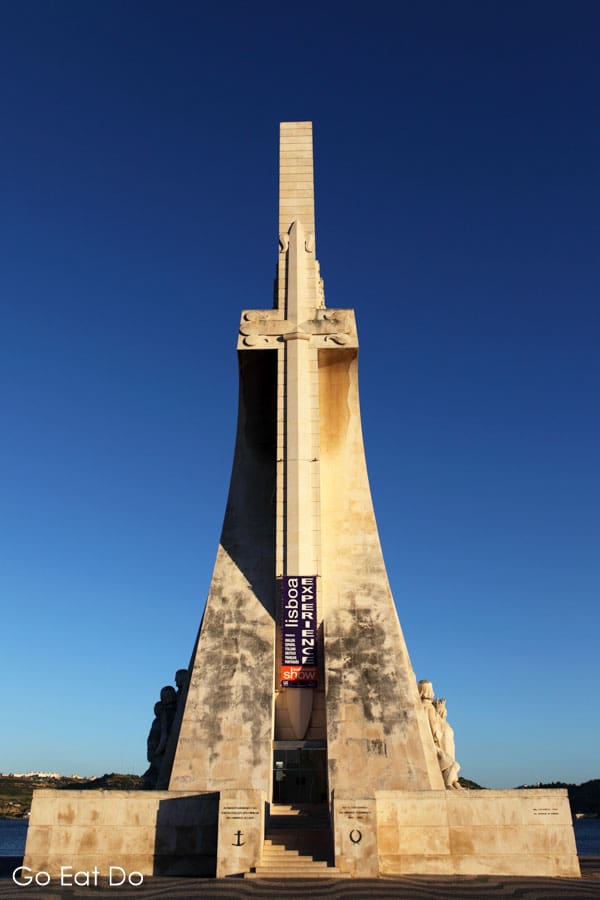
Map of Portugal’s Monument to the Discoveries
The map below shows the location of the Monument to the Discoveries in the Belem district of Lisbon:
Google Map showing the riverside location of the Monument to the Discoveries in Lisbon.
Looking for an insider tip for making the most out of a trip to Lisbon? Take an evening stroll along the riverside to view this famous monument then have dinner in one of the restaurants in Belem.
Further information
Find out more about attractions of the Portuguese capital on the Visit Lisbon website.
See the Visit Portugal page for more about the country as a whole.
Thanks for taking the time to read this post on Portugal’s Monument to the Discoveries in Belem, Lisbon. If you’re planning a weekend break in Lisbon you might find this article useful.
If you enjoyed this post why not sign up for the free Go Eat Do newsletter? It’s a hassle-free way of getting links to posts on a monthly basis.
‘Like’ the Go Eat Do Facebook page to see more photos and content.
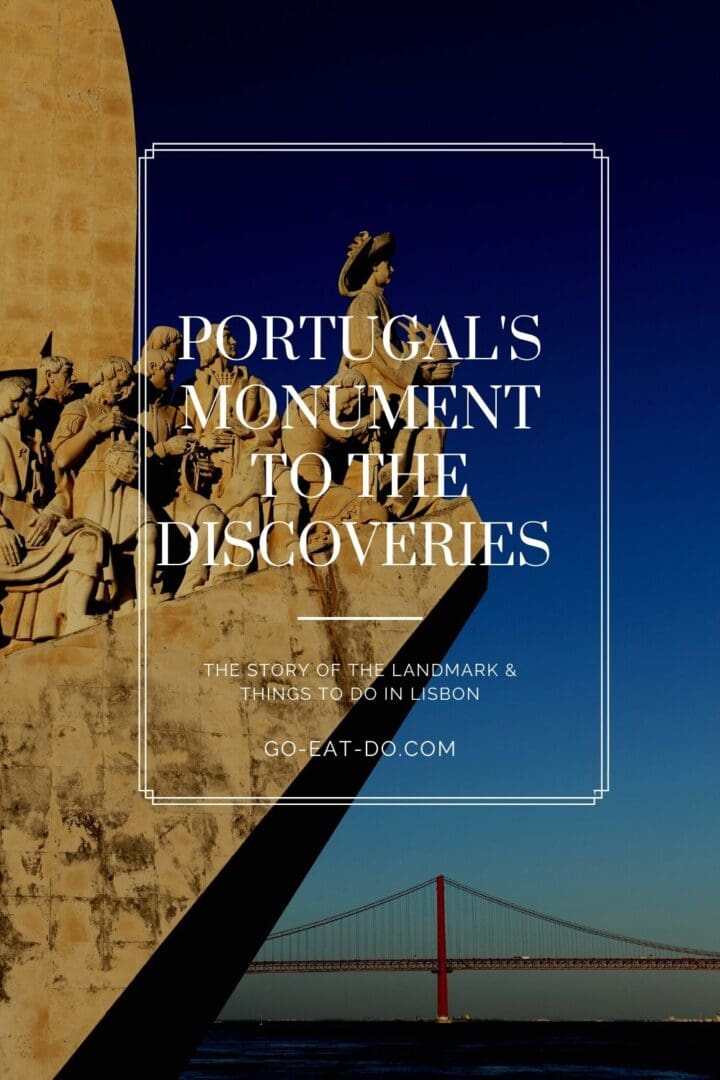




William Cha
July 11, 2014 at 13:54Who is on the monument?
What is the meaning of building this monument/statue?
How many people (explorers perhaps..) are on the monument/statue?
waiting for reply thnx!!
Stuart
July 13, 2014 at 11:18Hello William, Great question. The monument has depictions of 33 people, mainly explorers and members of the Portuguese royal family, so I won’t name them all here. They include Vasco da Gama, Ferdinand Magellan, the mathmetician Pedro Nunes and the poet Luís de Camões. Many people would say it celebrates their contributions to Portugal’s expansion and glory, perhaps something that revisionists would now regard as controversial?
Bob Man
May 26, 2016 at 16:37Anyone know how many steps you have to climb if you don’t use the lift?
You’d think it would be everywhere next to the height, but I can’t find it anywhere!
Stuart
May 29, 2016 at 15:29Hello Bob,
Good question. No, off the top of my head I can’t recall that. Perhaps a good reason to return?
Enjoy your travels, Stuart